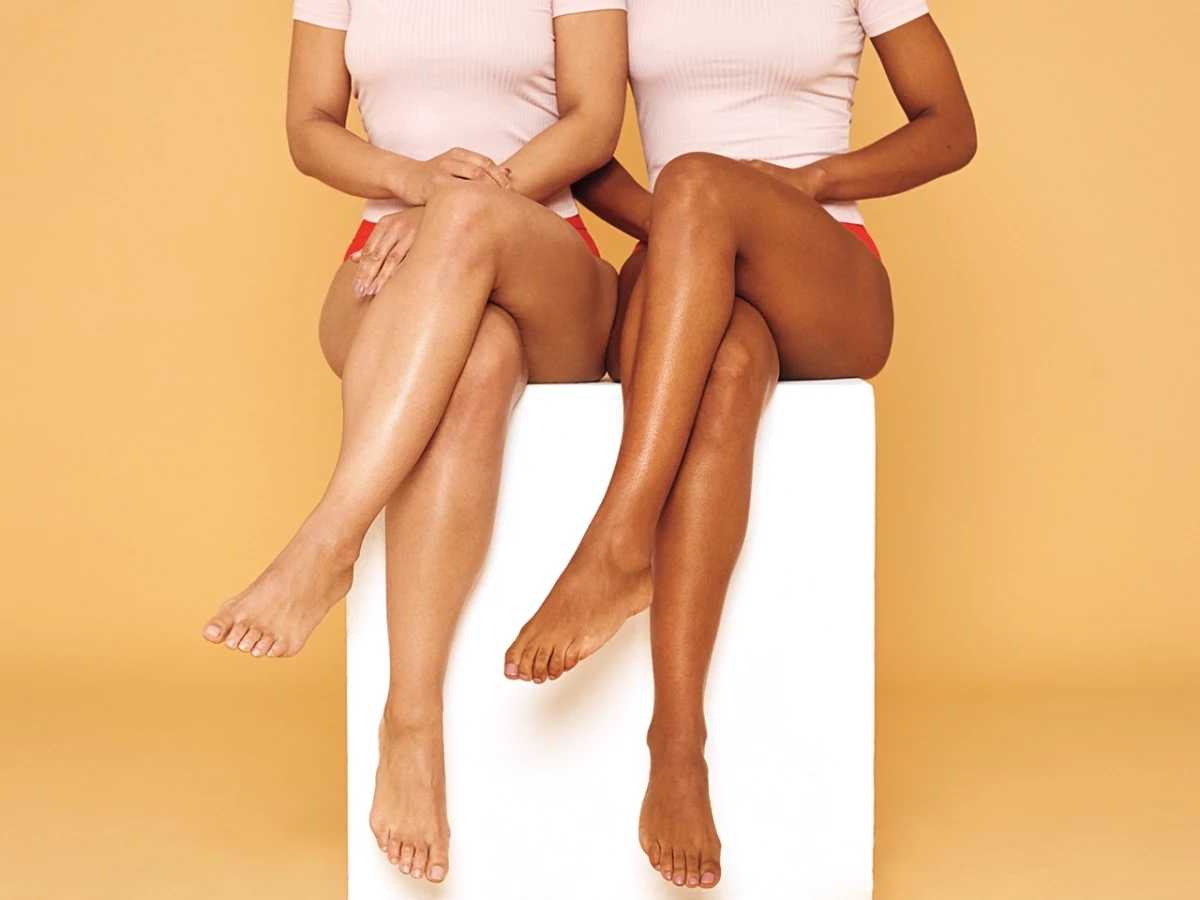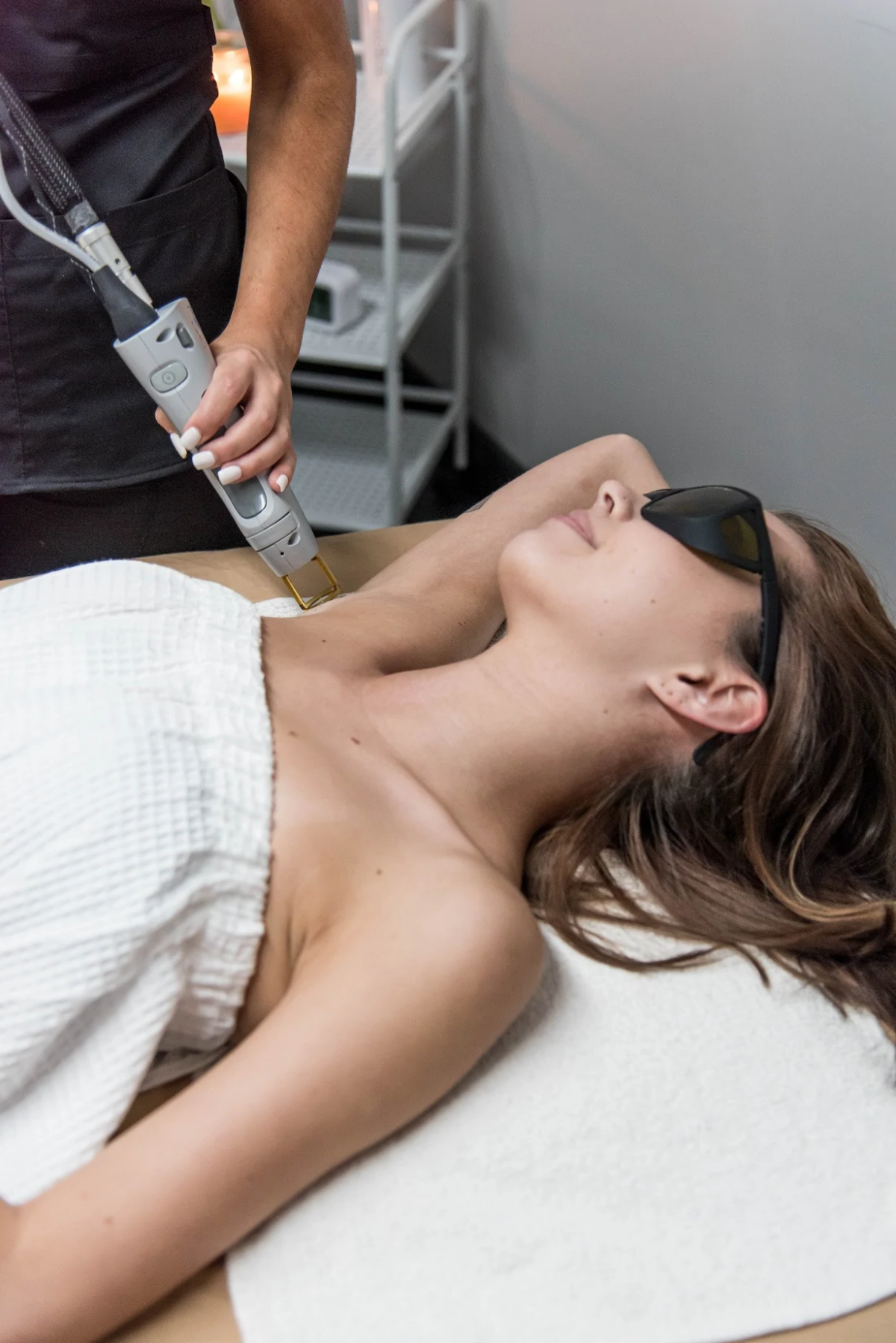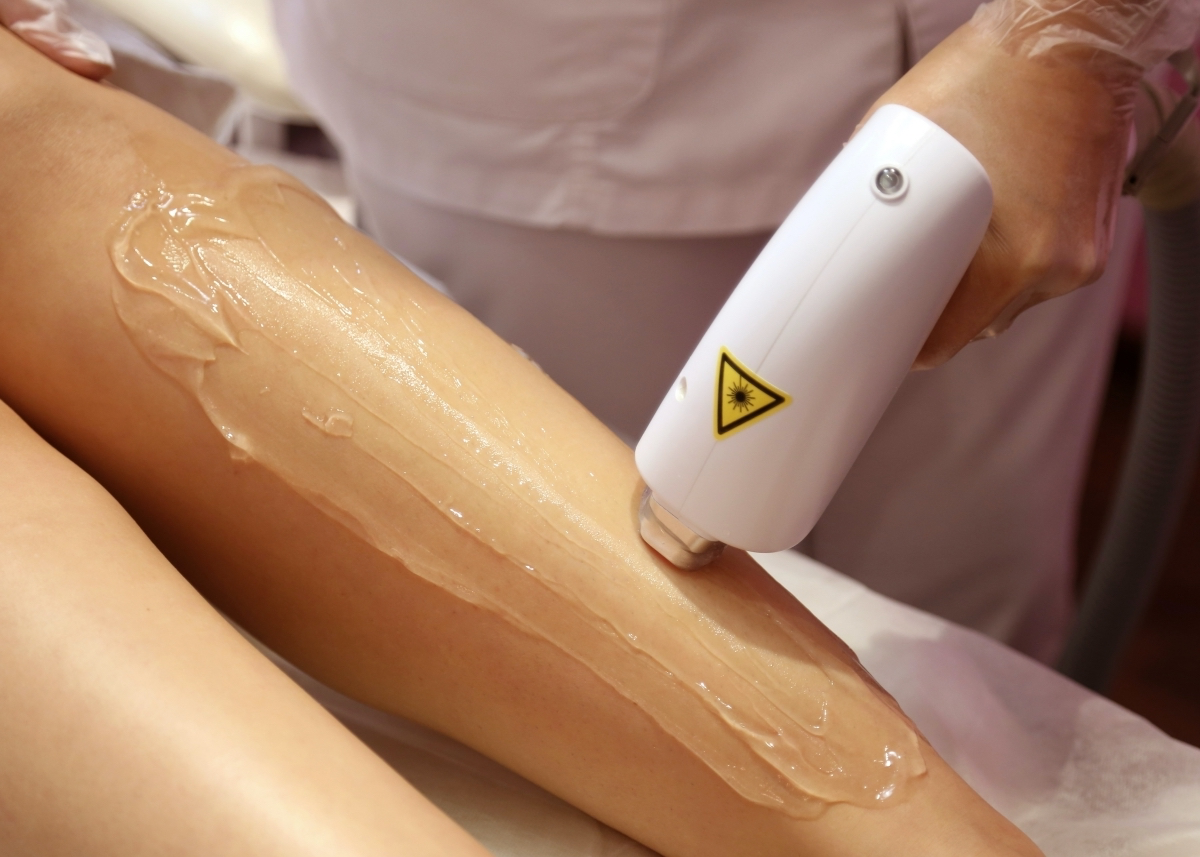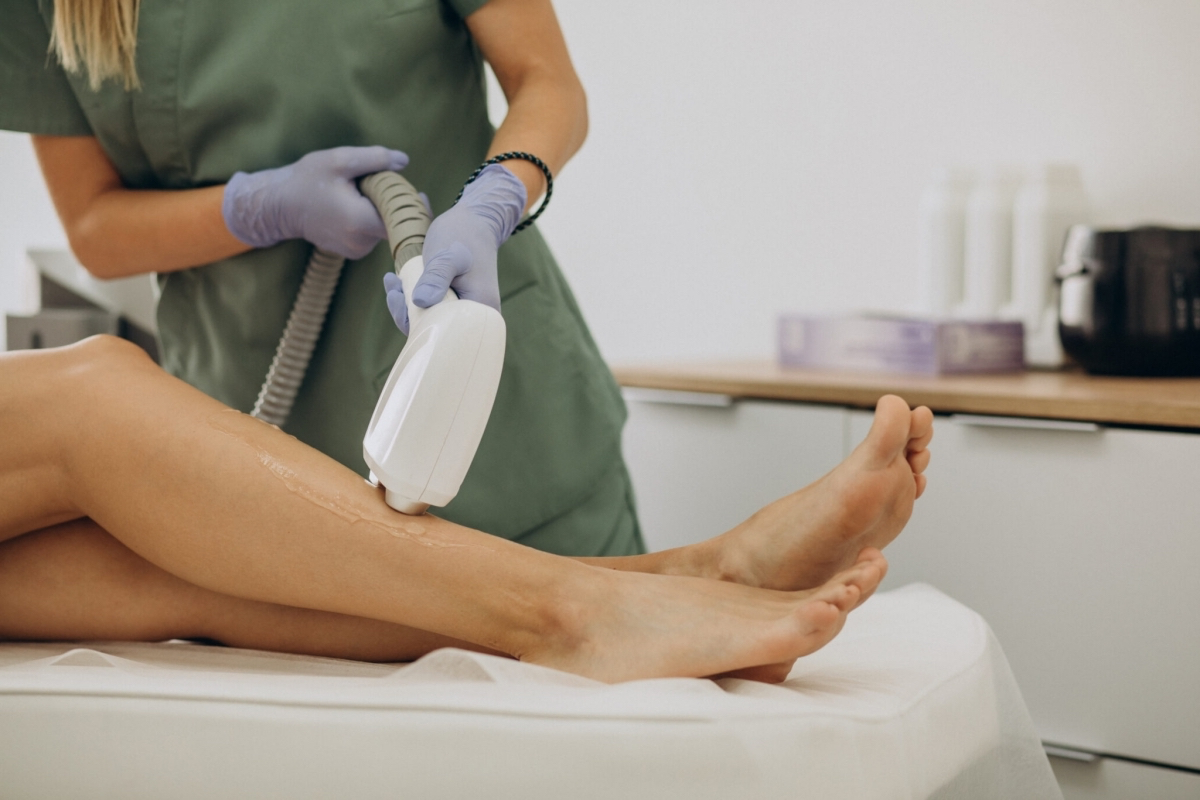The Real Deal on Laser Hair Removal: An Insider’s Guide
So, you’re thinking about laser hair removal. Good for you. I’ve spent countless hours on the other end of that laser, and I can tell you this: it can be absolutely life-changing. But the internet? It’s a mess of misinformation, confusing claims, and sketchy “facts.”
In this article
- First Off, How Does This Stuff Actually Work?
- Not All Lasers Are Created Equal
- The Big Question: Why So Many Sessions?
- Your Consultation: Seriously, Don’t Skip This
- Let’s Talk Money, Pain, and Time
- What to Expect Right After Your Session: A Quick Timeline
- Your Pre & Post-Care Checklist: The Golden Rules
- Quick Aside: What About Those At-Home Laser Devices?
- My Final Thoughts
- Inspirational Gallery with Photos
I wanted to cut through all that noise. This isn’t a sales pitch. Think of it as an honest chat, from my treatment chair to your screen. I’m going to share what I’ve learned from years in the treatment room—the good, the bad, and the things you absolutely need to know before you even book a consultation. Let’s get into it.
First Off, How Does This Stuff Actually Work?
It’s not magic, it’s just really clever science. The core idea is pretty simple: we’re using a very specific beam of light to target the pigment, or melanin, in your hair.
When that light hits the hair, the energy converts to heat. That heat then zips down the hair shaft and damages the follicle—the little sac that grows the hair. If we can damage it enough, it can no longer produce hair. That’s the whole game. This is why it works best when there’s a big contrast between your skin and hair color, like fair skin and dark, coarse hair. The laser can easily find its target without getting confused by pigment in the skin.

And yeah, this is also why laser hair removal, unfortunately, doesn’t work on white, grey, light blonde, or most red hair. There’s just not enough pigment for the laser to grab onto. Any honest technician will tell you this right away. It’s a limitation of the physics, and anyone promising you otherwise is waving a major red flag.
Not All Lasers Are Created Equal
Heads up! The type of machine used is a huge deal, especially when it comes to safety and getting good results for different skin tones. A pro clinic will have different options because your skin is unique. The main types you’ll encounter are based on the wavelength of light they use.
Here’s a quick rundown of the heavy hitters:
- The Alexandrite: This one is a powerhouse for fair to olive skin tones. It’s incredibly effective because it’s really good at targeting melanin. On the right candidate, the results are fantastic, but it’s a definite no-go for darker skin because it’s a bit too aggressive.
- The Diode: This is a super common and versatile laser. Think of it as the reliable workhorse of the industry. Its wavelength can reach a bit deeper, which makes it a safe option for a wider range of skin tones, even some lighter brown skin types.
- The Nd:YAG: This is the gold standard for treating dark and very dark skin. Its longer wavelength is clever—it doesn’t target the melanin in the hair as aggressively. Instead, it goes deeper to target the follicle’s blood supply. This makes it much, much safer for dark skin, as it’s less likely to be absorbed by the skin itself, which seriously reduces the risk of burns or pigmentation issues.

The Big Question: Why So Many Sessions?
Ah, the hair growth cycle. This is the reason you can’t just do one session and be done. Your hair grows in three phases, and the laser only works on one of them: the Anagen, or growth phase.
This is when the hair is actively growing and physically connected to the follicle, which acts as the perfect bridge for the laser’s heat to do its job. The other two phases, Catagen (transition) and Telogen (resting), are when the hair has detached or is falling out. The laser can’t do a thing during those times.
On any given day, only about 15-20% of your body hair is in that perfect growth phase. So, we schedule treatments every 4-8 weeks (depending on the body area) to catch the next batch of hair as it enters the anagen phase. That’s why completing your full series of 6-10 sessions is so critical.

Your Consultation: Seriously, Don’t Skip This
I cannot stress this enough: a thorough consultation is the foundation of a safe and successful treatment. If a clinic tries to rush you or book you without one, walk away. This is a medical procedure, not just a quick spa service. In my world, a consultation is a 30-minute deep dive to make sure this is right for you.
We’ll go over your medical history, any medications you’re on (some antibiotics and acne meds can make your skin light-sensitive), and your sun habits. We also use a medical classification system that scores your skin’s likely reaction to UV light to pick the perfect laser settings for you.
By the way, here are some questions you should definitely ask your technician:
- What specific laser will you be using for my skin type and why?
- What are your technicians’ certifications and how much experience do they have?
- What does your aftercare support look like if I have a question or concern?
- Can I see before-and-after photos of clients with similar skin and hair as mine?
And finally, we’ll do a patch test. I’d never treat a new client without one. It lets you feel the sensation and, more importantly, lets me see how your skin reacts over the next day or two. It’s a non-negotiable safety check.

Let’s Talk Money, Pain, and Time
Okay, let’s get real about the three things everyone wants to know. First, the cost. Prices vary WILDLY depending on your city and the clinic’s reputation, but to give you a ballpark… For a smaller area like underarms, you might see prices from $75 to $150 per session, with a package of six sessions running anywhere from $400 to $750. A larger area like full legs is a bigger investment, maybe $250 to $500 per session. Be wary of deals that seem way too cheap. A good laser machine can cost more than a luxury car, so super-low prices can be a red flag for outdated tech or undertrained staff.
Now, for the pain. Is it unbearable? Honestly, no. Most of my clients describe it as a quick, sharp snap, like a rubber band against the skin. It’s over in a second. Modern lasers have incredible built-in cooling systems that spray a cold mist right before the laser pulse, which helps a ton. What about numbing cream? You can ask your clinic about it. Some are fine with an over-the-counter 5% lidocaine cream, but you have to follow their instructions perfectly. A heads up, though: some techs prefer you don’t use it, as it can sometimes mask the skin’s natural reaction, which we need to monitor for safety.

And what about time? You’ll be shocked at how fast it is. An underarm treatment is literally about 5 minutes. A bikini line might take 15. Full legs? Settle in, that could be anywhere from 45 to 60 minutes.
What to Expect Right After Your Session: A Quick Timeline
It’s not over the second you leave the clinic. Here’s what the first week or so often looks like:
- Day 1: Expect some redness and maybe a little swelling around the follicles (we call this perifollicular edema). It often looks and feels like a mild sunburn. This is normal and a good sign! It usually calms down within a few hours.
- Days 5-14: The “Shedding” Phase. This is the part that freaks people out. Your hair will look like it’s growing back, but it’s not! It’s the dead hair being pushed out of the follicle. You might be able to gently exfoliate it away in the shower. This is the BEST sign that the treatment worked.

Your Pre & Post-Care Checklist: The Golden Rules
To get the results you’re paying for and stay safe, you have to do your part. It’s not optional.
Before Your Session:
- Shave the area 12-24 hours prior. The laser needs a clean path. If hair is on the surface, it just gets singed and wastes the energy.
- No waxing, plucking, or tweezing for at least 4-6 weeks beforehand. We need the hair root in the follicle to act as our target.
- Arrive with clean skin. No lotions, creams, or deodorant on the treatment area.
- The SUN is your enemy. No tanning or significant sun exposure on the area for at least two weeks before. If you come in with a tan, we have to turn you away for your own safety.
After Your Session:
- Cool it down. Aloe vera gel is your best friend. Keep it in the fridge for extra relief.
- Be gentle for 48 hours. That means no hot showers, saunas, hot tubs, or intense workouts that make you sweat a lot.
- SPF is mandatory. Protect the treated area with a broad-spectrum SPF 30 or higher. Every single day.

Quick Aside: What About Those At-Home Laser Devices?
I get asked this all the time. Are those devices you see online for a few hundred bucks the same thing? In short, no.
Most of them aren’t even lasers; they’re IPL (Intense Pulsed Light), which uses a broad spectrum of light, not a single, concentrated wavelength. The energy is much, much lower than a professional machine. This means results are less permanent and require far more frequent use. They can be okay for some people with the absolute perfect light-skin/dark-hair combo for minor touch-ups, but they can also be risky. There’s no professional guiding the settings, so the risk of user error, burns, or ineffective treatments is much higher. For significant, lasting, and safe hair reduction, nothing compares to a professional-grade treatment with a trained expert.
My Final Thoughts
Look, laser hair removal is an incredible tool. It can give you a freedom you never thought possible. But its success rests entirely on two things: respecting the science and choosing the right provider. A great laser in the hands of an inexperienced operator is a dangerous thing.

Your journey should start with research and a real conversation with a professional you trust. Ask questions. Be honest about your habits. And please, choose your clinic based on expertise and safety, not just the price tag. Your skin is worth it.
Inspirational Gallery with Photos
So, how much does it really hurt?
It’s the million-dollar question. Most people describe the sensation as a quick, sharp snap, like a rubber band hitting the skin. The feeling is momentary and fades instantly. Modern professional machines from brands like Candela or Cynosure have integrated cooling systems—either a blast of cryogenic air or a chilled tip—that dramatically reduce discomfort. Some areas, like the upper lip, are more sensitive than others, like the legs. Your technician can adjust the intensity to keep you comfortable.
The global laser hair removal market was valued at USD 584.21 million in 2022 and is expected to expand at a compound annual growth rate (CAGR) of 18.1% from 2023 to 2030.
What does this explosive growth mean for you? More competition, better technology, and more accessible pricing. Clinics are investing in the latest machines that offer faster treatments and enhanced comfort, making it a better time than ever to consider starting your journey to smoother skin.
Your Post-Session Lifesavers:
- A pure aloe vera gel (kept in the fridge for extra relief).
- A gentle, fragrance-free moisturizer like Cetaphil or CeraVe to soothe and hydrate.
- Loose, soft clothing for the first 24 hours to avoid friction on treated areas.
- A high-SPF, mineral-based sunscreen. We’re talking SPF 50+, no exceptions.
Don’t fall into the tanning trap. Showing up to your appointment with a tan—real or from a bottle—is a major safety risk. The laser targets pigment, and if your skin is darker than usual, the laser can’t effectively distinguish between hair and skin. This can lead to burns, discoloration, and ineffective treatment. Plan your sessions well outside of any beach vacations and stop using self-tanners at least two weeks prior.
Professional Laser: High-energy, targeted light that destroys the follicle. Performed by a certified technician. Requires fewer sessions for permanent reduction.
At-Home IPL: Uses broad-spectrum pulsed light (IPL), which is less concentrated. Devices like the Braun Silk·expert Pro 5 can offer good hair reduction, but they are less powerful and often require ongoing use to maintain results.
For permanent, medical-grade results, professional is the gold standard; for maintenance or slowing growth at home, IPL is a convenient alternative.
- Faster, more noticeable results.
- Reduced risk of skin irritation.
- Ensures each hair is treated in its active growth phase (anagen).
The secret? Sticking to your treatment schedule religiously. Spacing appointments 4-6 weeks apart is crucial. Skipping or delaying sessions means you’ll miss hair growth cycles, ultimately requiring more treatments and costing you more time and money.
The Golden Rule: Shave, don’t wax or pluck. It’s essential to shave the treatment area 12-24 hours before your appointment. The laser needs a small amount of hair beneath the skin’s surface to target, but any hair above the skin will just absorb the energy and singe, which is ineffective and can be painful. Waxing or plucking removes the entire hair shaft and root, leaving nothing for the laser to target.
Fact: The average woman will spend over $10,000 and nearly two full months of her life managing unwanted hair through shaving.
When you look at it that way, the upfront cost of a laser hair removal package becomes a long-term investment. It’s not just about the money saved on razors, creams, and waxes, but also the invaluable time you get back week after week.
Your skin will be extra sensitive to the sun after a treatment, making sunscreen a non-negotiable part of your aftercare. Look for a formula that is:
- Mineral-Based: Zinc oxide or titanium dioxide are less irritating than chemical filters.
- High SPF: Choose SPF 30 at the bare minimum, but SPF 50+ is ideal.
- Fragrance-Free: Avoid any potential irritants. Brands like EltaMD or La Roche-Posay’s Anthelios Mineral line are excellent choices.
The machine is important, but the person operating it is even more so. A great technician is certified, experienced with your skin type, and will perform a thorough consultation, including a patch test. They should ask detailed questions about your medical history and any medications you’re taking. Never be afraid to ask about their qualifications and experience—a true professional will be happy to share.










